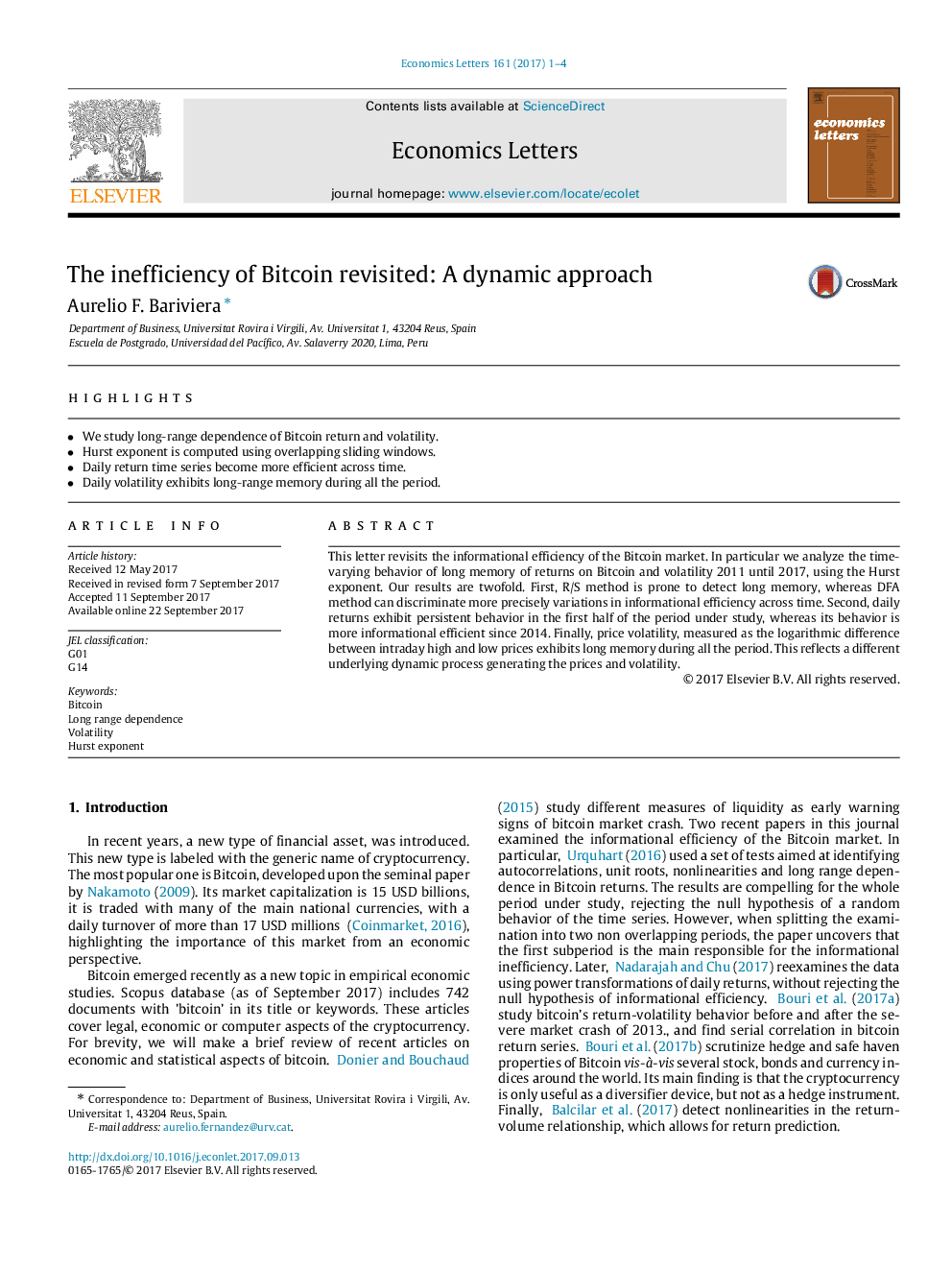| Article ID | Journal | Published Year | Pages | File Type |
|---|---|---|---|---|
| 5057500 | Economics Letters | 2017 | 4 Pages |
â¢We study long-range dependence of Bitcoin return and volatility.â¢Hurst exponent is computed using overlapping sliding windows.â¢Daily return time series become more efficient across time.â¢Daily volatility exhibits long-range memory during all the period.
This letter revisits the informational efficiency of the Bitcoin market. In particular we analyze the time-varying behavior of long memory of returns on Bitcoin and volatility 2011 until 2017, using the Hurst exponent. Our results are twofold. First, R/S method is prone to detect long memory, whereas DFA method can discriminate more precisely variations in informational efficiency across time. Second, daily returns exhibit persistent behavior in the first half of the period under study, whereas its behavior is more informational efficient since 2014. Finally, price volatility, measured as the logarithmic difference between intraday high and low prices exhibits long memory during all the period. This reflects a different underlying dynamic process generating the prices and volatility.
